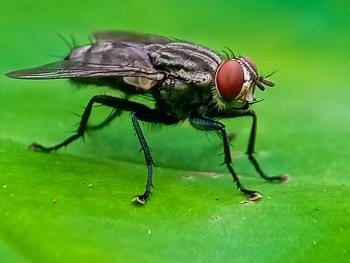
Counting Free-Roaming Cats in Cities: A Step Toward Humane Management
University of Guelph researchers explain their methods of estimating the number of free-roaming cats that inhabit Guelph in recent study.
How do you count outdoor cats in a large urban area? Researchers from the University of Guelph (Ontario, Canada) describe their methods of estimating the free-roaming cat population of Guelph in an article recently published in
“Knowing the number of outdoor cats in our communities is the first step towards designing effective and humane management strategies for outdoor cat populations,” said coauthor Jason Coe, DVM, PhD, in a
The free-roaming cat population includes feral cats, strays, and owned indoor-outdoor cats. Estimating the total number is not straightforward, say the authors. “Cats from these groups have different outdoor activity patterns and home ranges that presumably would influence rates of temporary emigration from the sampling location,” they write. For example, owners of indoor-outdoor cats bring them indoors from time to time, removing them from the population being counted (this counts as “temporary emigration” for owned cats).
The investigators counted cats using distance sampling techniques and used municipal information (land use and census data, for example) to estimate cat density in different urban areas: residential neighborhoods, parks, and industrial, commercial, and institutional areas. “Using distance-based sampling that accounted for imperfect detection, we found cat abundance differed between land uses, declined with increasing median income levels and increased with distance to both wooded areas and building density,” they write.
The researchers examined five variables that could affect free-roaming cat density:
- Land use patterns: The cat population was highest in residential areas. In residential neighborhoods, say the authors, humans provide food for both owned and stray cats. Rodents and birds (as prey) may also be abundant in these areas.
- Socioeconomic status: Cats were more numerous in lower-income areas, possibly because fewer owners neuter their cats in these neighborhoods.
- Building density: More cats lived in areas of high building density.
- Distance to woods: Fewer cats lived near wooded areas, probably because of the presence of predators like coyotes, the authors suggest.
- Distance to major roads: The authors hypothesized that distance to roads could affect cat density, but they did not report that this variable had a significant effect.
The analysis yielded an estimated population of 7662 free-roaming cats (95% CI, 6145-9966) in Guelph. For comparison, the investigators also randomly surveyed Guelph residents to arrive at an independent estimate of outdoor cat population. The population ranges estimated by the two methods overlapped. Based on the survey, the estimated cat population was 11,927 cats (95% CI, 6361-20,989).
Population studies of outdoor cats are important, say the authors, because free-roaming cats can adversely affect the environment and public health. Understanding the variables that drive outdoor cat density can help policy makers and animal welfare workers identify humane and effective methods of managing the cat population. For instance, because food supply appears to affect cat density, say the authors, then “limiting food availability may be an effective intervention to reduce the resources available to free-roaming cats.”
The land use data and other municipal information used in the estimate is readily available for most large North American cities, write the authors, so the same techniques can be used in other urban areas even with a small amount of field data. “The study was done using techniques that are easy, quick and cheap, providing an opportunity to apply the method to any community that is interested in knowing their number of free-roaming outdoor cats,”
The study was funded by the Nestlé Purina PetCare Canada Chair in Communications.
Dr. Laurie Anne Walden received her doctorate in veterinary medicine from North Carolina State University. After an internship in small animal medicine and surgery at Auburn University, she returned to North Carolina, where she has been in small animal primary care practice for over 20 years. Dr. Walden is also a board-certified editor in the life sciences and owner of Walden Medical Writing, LLC. She works as a full-time freelance medical writer and editor and continues to see patients a few days each month.
Newsletter
From exam room tips to practice management insights, get trusted veterinary news delivered straight to your inbox—subscribe to dvm360.




